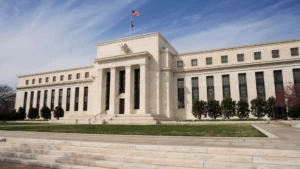Lesson 15: Central Banking and Its Role in Modern Economies
The history of central banking traces its origins back to the early 17th century with the establishment of the Bank of England in 1694. This institution marked the beginning of modern central banking, setting a precedent for countries around the world. Central banks, such as the Federal Reserve in the United States and the European Central Bank (ECB) in the European Union, play a critical role in modern economies. At their core, central banks are responsible for managing the money supply, ensuring financial stability, and fostering economic growth. Their most significant function is controlling inflation, which they do through various monetary policy tools, such as setting interest rates and engaging in open market operations. These tools influence the cost of borrowing and the general level of economic activity.


The relationship between central banks and inflation is complex. Central banks aim to maintain a stable rate of inflation, generally targeting around 2% per year, as too much inflation can harm an economy by eroding purchasing power, while deflation can lead to economic stagnation. Central banks control inflation by managing the money supply and adjusting interest rates. By raising interest rates, they can reduce borrowing and spending, which helps cool down inflation. Conversely, lowering interest rates encourages borrowing and spending, stimulating economic growth. This balancing act is a delicate one, as excessive inflation or deflation can lead to economic instability, affecting everything from employment rates to consumer confidence.
A critical function of central banks is to manage government debt. Governments often run budget deficits, borrowing money to finance spending that exceeds revenue. Central banks can purchase government bonds to help finance these deficits, thus increasing the money supply. This practice, however, can lead to inflation. In extreme cases, when governments continuously print money to cover their debts, the resulting inflation can spiral out of control, leading to hyperinflation. This relationship between government debt and inflation is central to understanding the dynamics of modern monetary systems. Governments have a vested interest in maintaining manageable debt levels, as excessive debt can lead to economic instability, loss of confidence in the currency, and, ultimately, a collapse of the monetary system.
However, the risks of excessive debt and the accompanying inflationary policies are becoming more pronounced in today’s global economy. Nations worldwide, particularly those with large deficits and high debt-to-GDP ratios, are at risk of entering a dangerous cycle. As debt levels rise, so too do the costs of servicing that debt. Governments are often forced to resort to inflationary measures to reduce the real burden of debt, but this further exacerbates inflation, eroding the value of the currency and leading to long-term economic instability. In many cases, central banks, while trying to maintain economic stability, inadvertently contribute to an unsustainable debt spiral, making the situation worse. The global debt crisis, fueled by these unsustainable monetary policies, is a ticking time bomb, with the potential to destabilize economies and financial systems around the world.
